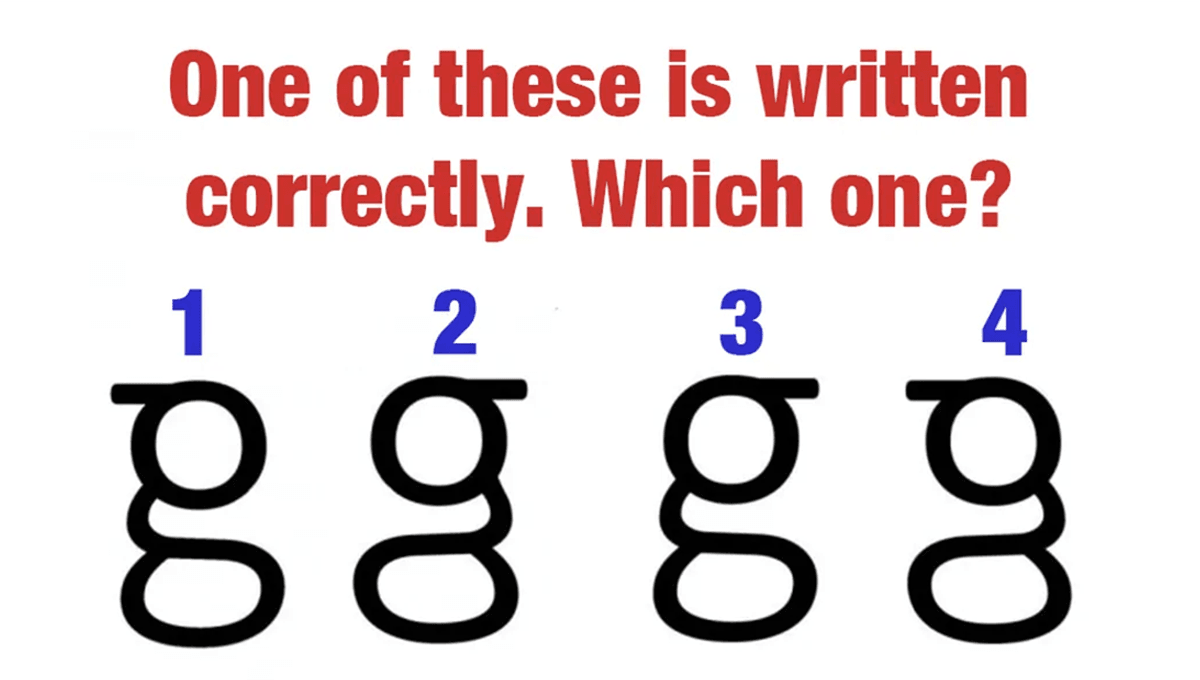
The letter “g” is pretty inescapable. It’s everywhere. Good. Great. Gongoozler. God. Garbage. Giggles. But according to a new study, people are really, really bad at recognizing it in the wild.
You’re probably familiar with how to write lower-case “g”s, but how they appear on a screen or in print is not the same. How they often appear in print is known as a “looptail” g. This g appears everywhere from books, newspapers, leaflets to the Times New Roman and Calibri fonts.
Despite seeing it every day though, psychologists at Johns Hopkins University have found that most people can’t recognize, and are often completely unaware that two forms of the lower-case letter g exist at all.
Which is the correct g? Answer at the bottom of the article.
For the study, published in the Journal of Experimental Psychology: Human Perception & Performance, researchers first asked 38 volunteers to list letters that they thought had two varieties when printed out.
“In Experiment 1 most participants failed to recall the existence of looptail g when asked if G has two lowercase print forms,” the team wrote in their study. “Almost none were able to write looptail g accurately.”
Only two of the volunteers could do so.
The researchers then had the volunteers scan the text for instances of the looptail g. Immediately afterwards, they were asked to reproduce it. Only one of the participants was able to do so, and half the participants just wrote the usual open tail g you are used to writing.
In the final part of the experiment, participants were asked to identify the letter g from several lookalike gs. Only seven correctly identified the g out of 25 asked to do this task.
In short: “They don’t entirely know what this letter looks like, even though they can read it,” co-author Gali Ellenblum said in a statement.
So what’s going on?
“What we think may be happening here is that we learn the shapes of most letters in part because we have to write them in school. ‘Looptail g’ is something we’re never taught to write, so we may not learn its shape as well,” Michael McCloskey, senior author on the paper said.
“More generally, our findings raise questions about the conditions under which massive exposure does, and does not, yield detailed, accurate, accessible knowledge.”
The authors speculated that children growing up on screens may be at a disadvantage when learning to read.
“Do they have a little bit more trouble with this form of g because they haven’t been forced to pay attention to it and write it?” McCloskey said. “We could ask whether children have some reading disadvantage with this form of g.”
The study was published in the Journal of Experimental Psychology: Human Perception & Performance.
The correct g is 3.
Source Link: Looptail G: Most People Can't Recognize A Letter You Have Seen Millions Of Times